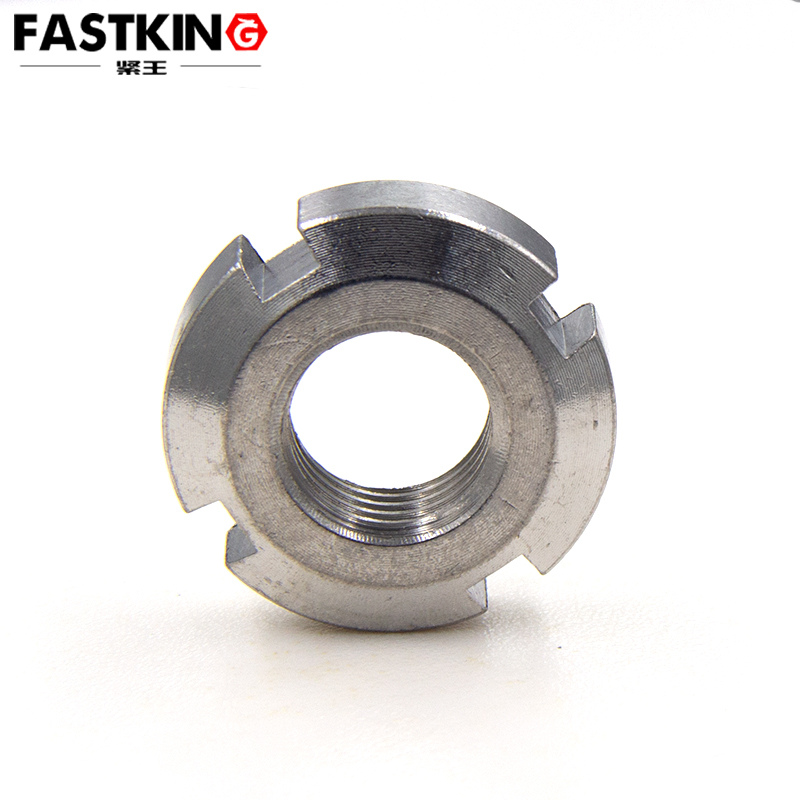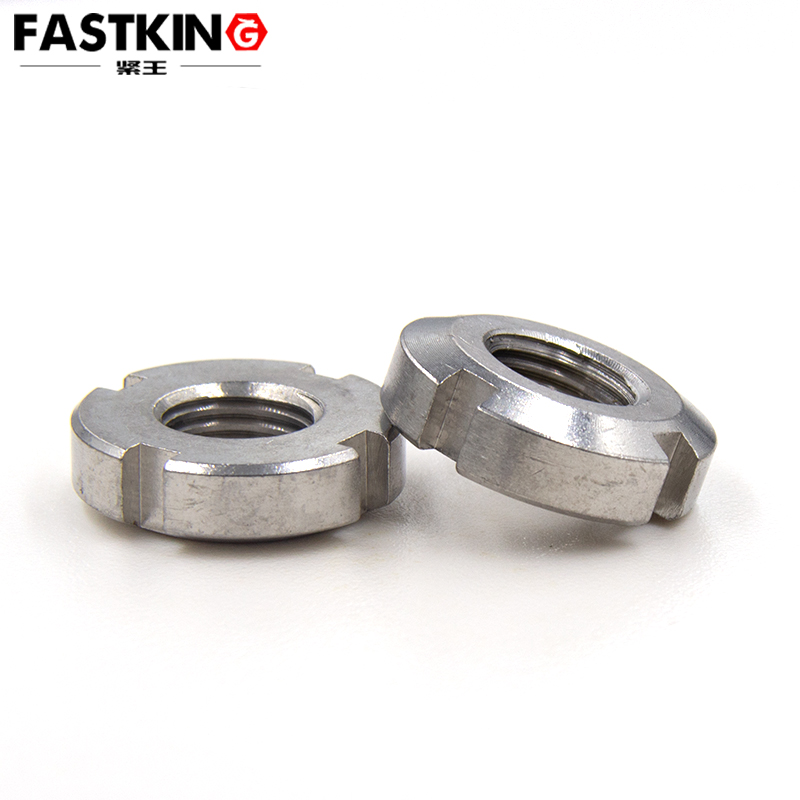Applications

1. Shaft Component Fixation
Round nuts are commonly used on shaft components in machinery to prevent axial displacement. By engaging with the shaft's threads, the round nut securely fixes the component in place, ensuring that it does not shift axially during operation.
2. Locking Rolling Bearings
On shafts equipped with rolling bearings, round nuts are used to lock the inner ring of the bearing. When paired with a lock washer, the round nut effectively prevents the bearing from loosening due to vibration or impact during operation, ensuring smooth and reliable bearing performance.
3. Mechanical Transmission Systems
Round nuts are widely used in various mechanical transmission systems, such as reducers, motors, and gearboxes, to secure transmission components. They can withstand significant axial loads, ensuring the stability and reliability of the transmission system.
4. Other Applications

Round nuts are also used in machine tools, automobiles, and construction machinery to secure various components. Their anti-loosening and anti-vibration properties make them suitable for harsh working environments.
Usage Methods
1. Assembly Steps
Prepare Tools and Components: Ensure you have a round nut compliant with GB812 standards, a lock washer compliant with GB858 standards, and a dedicated hook spanner.
Install the Lock Washer: Align the inner tab of the lock washer with the keyway on the shaft and slide it into place.
Screw on the Round Nut: Thread the round nut onto the shaft and tighten it to the required torque.
Secure the Lock Washer: Bend the outer tab of the lock washer and insert it into the groove of the round nut, ensuring a tight fit to prevent loosening.
2. Operational Precautions

Use the Correct Tools: Always use a dedicated hook spanner for installing and removing round nuts. Avoid using ordinary wrenches to prevent damage to the nut's grooves.
Control Tightening Torque: Adjust the tightening torque according to the nut's specifications and application requirements to avoid damage or loosening due to excessive or insufficient torque.
Inspect Assembly Quality: After assembly, check that the lock washer is securely embedded in the nut's groove to ensure the nut does not loosen during shaft rotation.
3. Maintenance and Inspection
Regular Inspections: Periodically check the tightness of the round nut during equipment operation to identify and address any loosening promptly.
Replace Damaged Parts: If the round nut or lock washer shows signs of wear, deformation, or damage, replace them immediately to ensure the safe operation of the equipment.
Conclusion
Round nut GB812 is a high-performance fastener suitable for various mechanical assembly applications. When used in conjunction with a lock washer, it effectively prevents loosening, ensuring the stability and reliability of equipment. Proper use of round nuts not only improves operational efficiency but also extends the service life of equipment.
